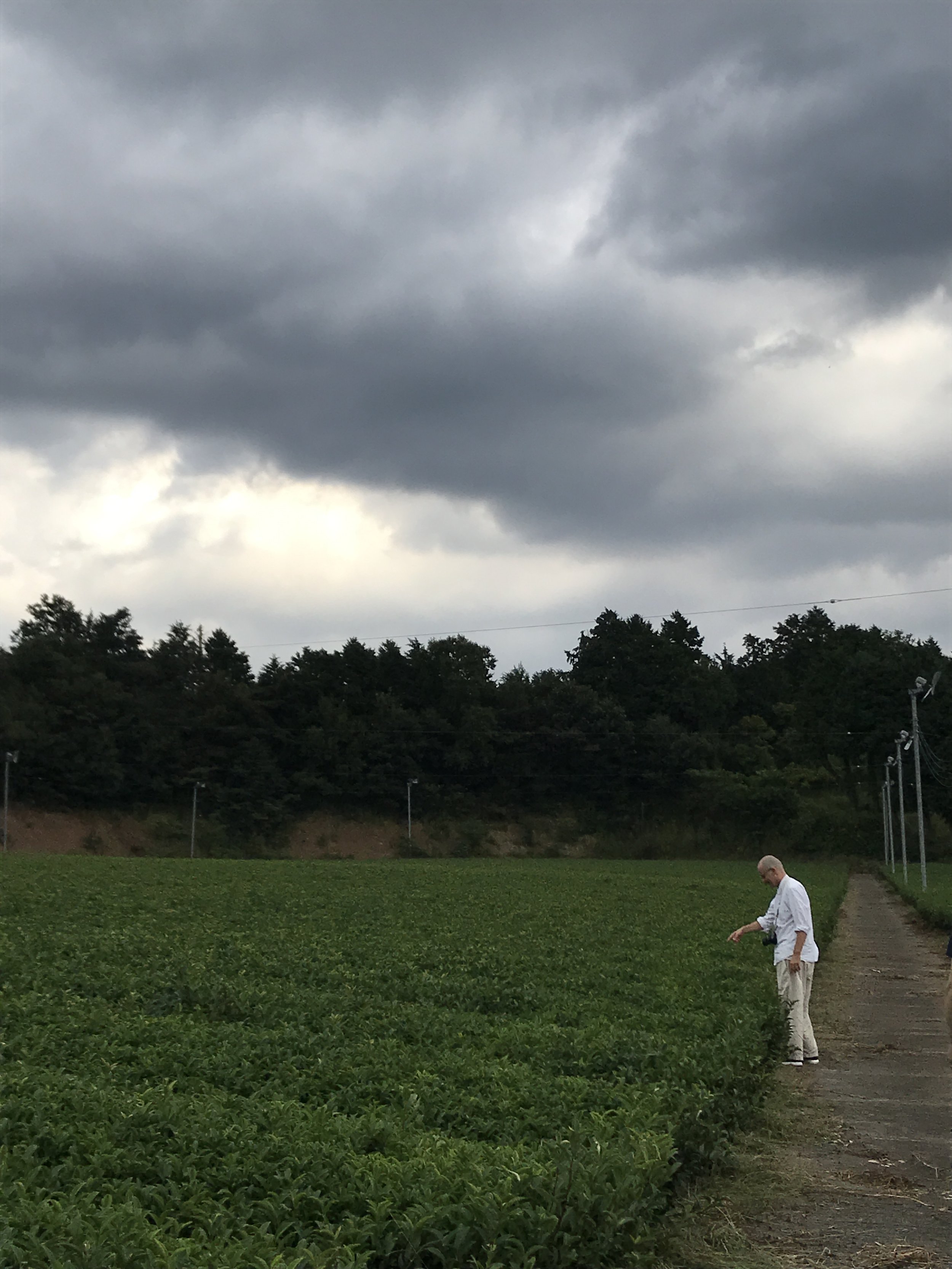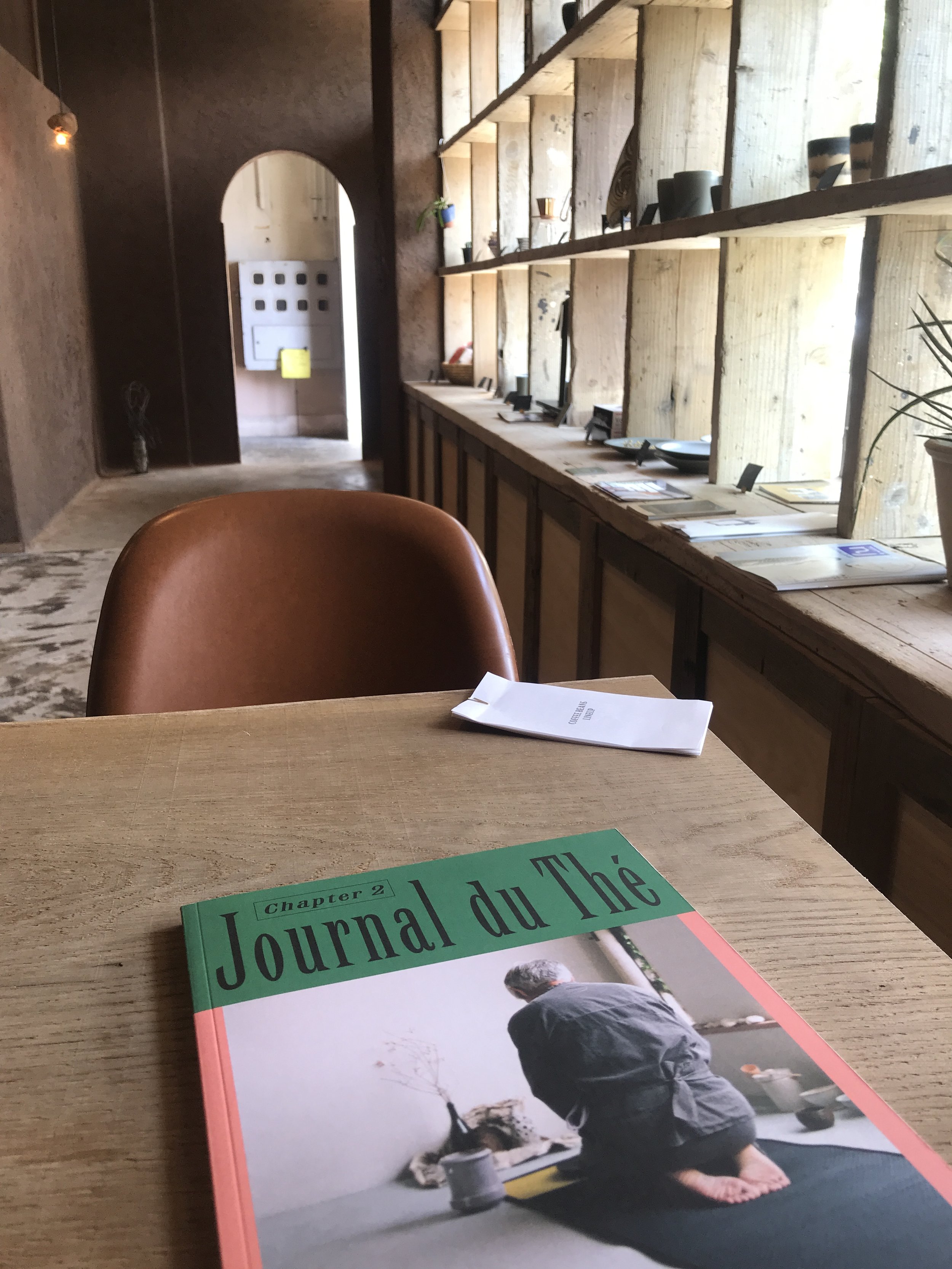Journal Du The
Tilmann Wendelstein
Germany
Joanna Tagada Hoffbeck
France
Oct. 2018
ティルマン・ヴェンデルシュタイン
ドイツ
ジョアンナ・タガダ・ホフベック
フランス
2018年10月
The book on tea Journal du The is created as an art project by the German designer Tilmann S. Wendelstein and the England-based artist Johanna Tagada Hoffbeck. They visit their contacts they nurtured through the practices of design and art, taking tea as the “common thread” to weave through the various cultures and locations around the world.
Tilmann visited Ukiha in 2018 for the second time to cover stories about characteristic tea farmers Yuhachiro Higuchi (Ukiha no Yamacha) and Yukitaka Kawakita (Kusumoridou).
JDT (ジャーナル・デュ・テ) は、ドイツ人デザイナー ティルマン・ヴェンデルシュタインとフランス人アーティスト ジョアンナ・タガダ・ホフベックの二人によるインディペンデント系アートブックです。お茶文化をテーマとして二人が培った人脈をたどり、お茶にまつわる人や場所を巡る親密で美しい世界観が共感を呼び、世界中の取扱店ではすぐに完売しているこのシリーズは現在チャプター5を作成中とのこと。
JDTチャプター2の取材のために、ティルマンがうきはを訪れたのは2018年のことでした。その前年に滞在した際に巡って取材先と見定めていた「うきはの山茶」樋口勇八郎さんと「楠森堂」河北幸高さんのところへ本格的に取材に訪れることが目的でした。
日本とのつながりが強いヴェンデルシュタイン・ティルマン氏(右)同時期に滞在していたオーストラリア人カップルと製茶業者さん2軒を訪ねました。中:『うきはの山茶』樋口勇八郎氏
Center: Yuhachiro Higuchi, Ukiha no Yamacha
Right: Tilmann S. Wendelstein
With the Australian couple who were staying in Ukiha






Yuhachiro Higuchi manages 7 fields in the deep mountain of Ukiha, where he cultivates them with a help of few people all manually to achieve 100% organic tea production. He then showed us the old-fashioned tea factory, where the local farmers come to process their freshly harvested tea (usually in the months of May and October).
樋口さんは私たち取材の一行を7か所あるという山奥の畑のうちの一つにご案内くださいました。平地では実現が難しいという完全無農薬のお茶農業を少ない人手で行っていらっしゃる樋口さん。畑の近くにある昔ながらの製茶工場も見せていただきました。



The next destination was Kusumoridou, where Yukitaka Kawakita is protecting the heritage of the 1200 year-old Kawakita family tradition, one of which is the heirloom tea cultivation. His naturally cross-breeding tea trees from a single origin is called Zairaicha, literally meaning “the original tea of the land”. Tilmann was fascinated to find this rare eco-system of more than 20000 different cultivars growing in his field.
Some of the tea trees in his farm is nearly 200 years old, and each has a unique characteristic of flavor, also affected by the volcanic soil and pure underground water of Ukiha. Due to the government-led agricultural industrialization in the ‘70s along with the economic boom, most of all the tea farms were reorganized into corporations and changed their method of farming from the traditional, all-manual vernacular ways to mono-cultural industrial production. Since Kawakita family had relocated to other big cities during this period, their properties including the farms were left untouched. For this fortunate coincidence, their tea field is now the largest in area in Japan in producing the wild variation of tea.
次に訪れたのは浮羽町山北にある「楠森堂」さんの在来茶の畑です。70年代に国の主導で日本の茶畑のほとんどが推奨品種に植え替えられ、さらに接木(つぎき-クローン栽培)での農法に切り替えられ大量生産体制が配備されましたが、その時期に製茶に力を入れておられなかった河北家の畑は奇跡的に植え替えを免れて、現在でも200年以上前から自然交配を繰り返し増えてきたお茶の木達がそのまま育っている希少な在来茶の畑となっているそうです。「お茶農業を20年前に始めた時はマニュアル通りに農薬を最低限使っていましたが、全く使わなくなってからかえってお茶の木が元気になったんです」と河北さん。数百年の間に雑草が肥料となり、良質な土壌に深く根を張るお茶の木達は毎年花をつけ、虫達が受粉を手伝って次の実ができる。長年のサイクルを通してエコシステムが出来上がっている楠森堂の畑では、病害虫も広がらず、農薬や化学肥料が必要ない自然栽培が成り立っている奇跡のような畑なのです。


お茶の花。新しく落ちる種から育つ「実生(みしょう)」の茶の木は一本一本葉の色や枝振りが異なり、茶畑は多様性を視覚化したような眺めです。
The zairaicha field looks like a visual example of diverse ecosystem. In spring, the bees are everywhere busy helping the pollination of the flowers, which will bare the seeds of each unique variation of the next generation.


2019年に発行されたJDTチャプター2は、世界各地のお茶専門店やアート関連のお店などで取り扱われ、うきはにお茶やアートやカルチャーに関わる専門家達が続々と訪れるきっかけとなりました。
JDT Chapter 2, which was sold at most charming shops and galleries around the world, became like a seed to new connections, bringing many tea specialists and creative minds to Ukiha in the course of following years.


